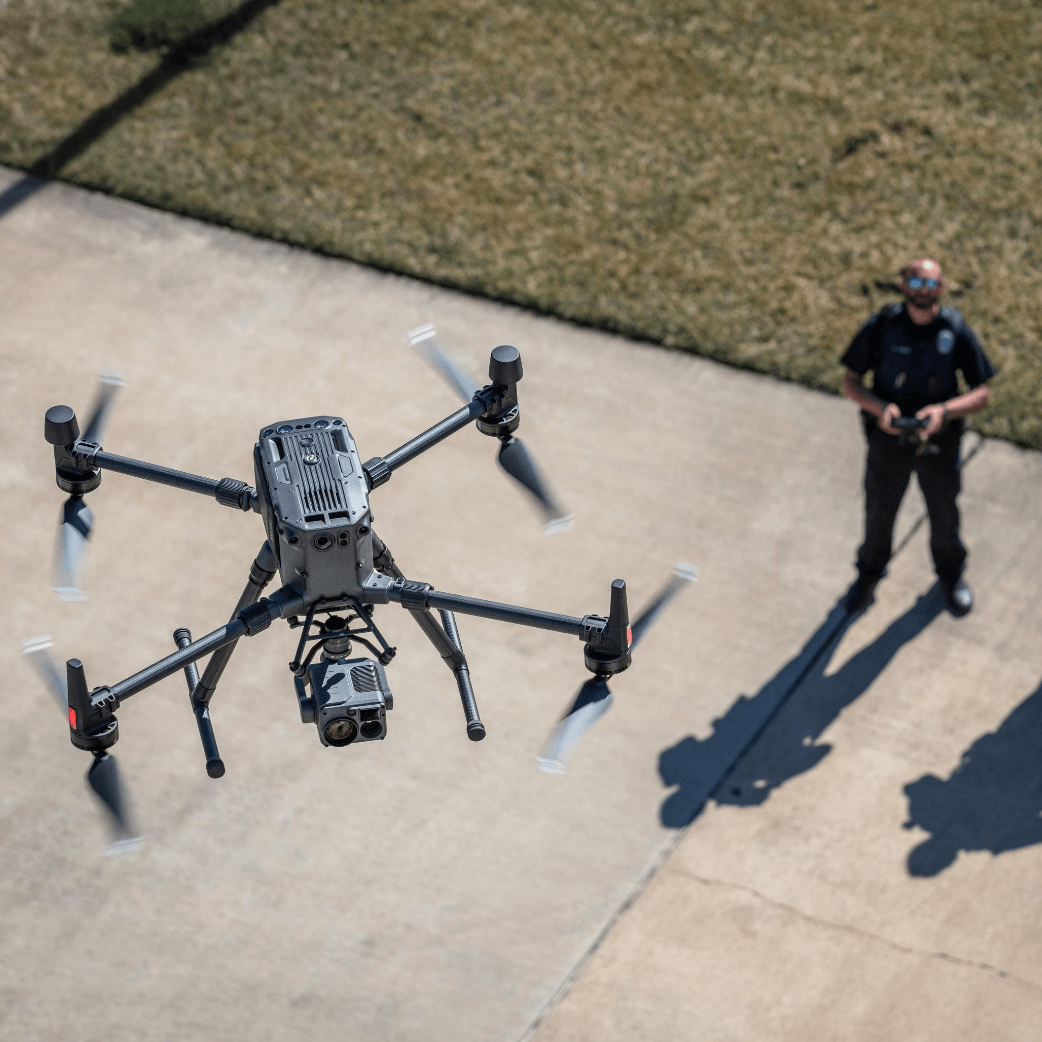
News
Published on 21 Aug 2020
James Willoughby
Tactical BVLOS Waivers For First Responders
The FAA has issued guidance to help U.S. first responders apply for Tactical BVLOS drone waivers to enable beyond visual line of sight flights. ... Read More

usa.png HELIGUY.com™ note
This post is more pertinent to U.S. readers due to its themes around U.S. drone laws and training.
For a similar UK post, read UK Drone Laws: Where Can I Fly?
FAA publishes guidance to enable first responders to apply for a Tactical BVLOS waiver;
Tactical BVLOS drone flights will enable public safety crews to better protect the public and enhance crew safety;
Read this blog to find out how to apply for an FAA waiver and what guidelines need to be followed;
Drones in the DJI ecosystem, supplied by HELIGUY.com™, offer reliable solutions for BVLOS flights.
The FAA (Federal Aviation Administration) has released a guide to help public safety agencies apply for First Responder Tactical Beyond Visual Line of Sight (TBVLOS) drone waivers.
These temporary waivers will enable first responders using drones to better protect the public and fly UAS (unmanned aircraft systems) into areas where it is unsafe to send people.
The waivers will ease public safety restrictions, helping reduce the risk to first responders and ensure community safety.
The FAA said: "In a time of extreme emergencies to safeguard human life, first responders require the capability to operate their unmanned aircraft beyond visual line of sight to assess operational environments.
"These include a fire scene at a large structural fire, an aerial search on a large roof area for a burglary in progress, or to fly over a heavily forested area to look for a missing person.
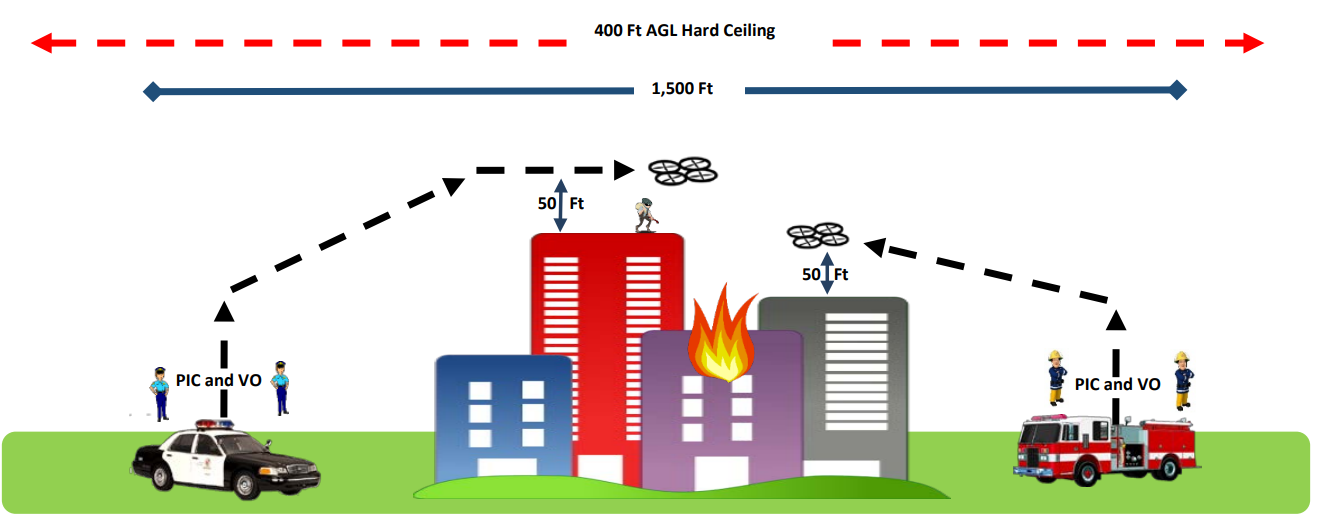
"To support public UAS operators acting in an active first responder capacity, the FAA may approve First Responder Tactical Beyond Visual Line of Sight (TBVLOS) waivers to 14 CFR 91.113(b)."
The news is a major boost for public safety agencies who are benefiting from drones.
Earlier this year, Chula Vista Police Department received FAA approval to fly drones BVLOS. Chula Vista was the first police department in the nation to receive a BVLOS approval.
What Is BVLOS?
Unlike VLOS (visual line of sight) flights, which are operated within the pilot’s line of sight, BVLOS flights are flown beyond the visual range.
The advantages of flying BVLOS is that it enables a drone to cover far greater distances and provides extended visibility.
For public safety agencies, BVLOS makes single pilot missions more useful and will help to improve situational awareness - key for making fast and effective decisions, shaping tactical responses, and improving safety.
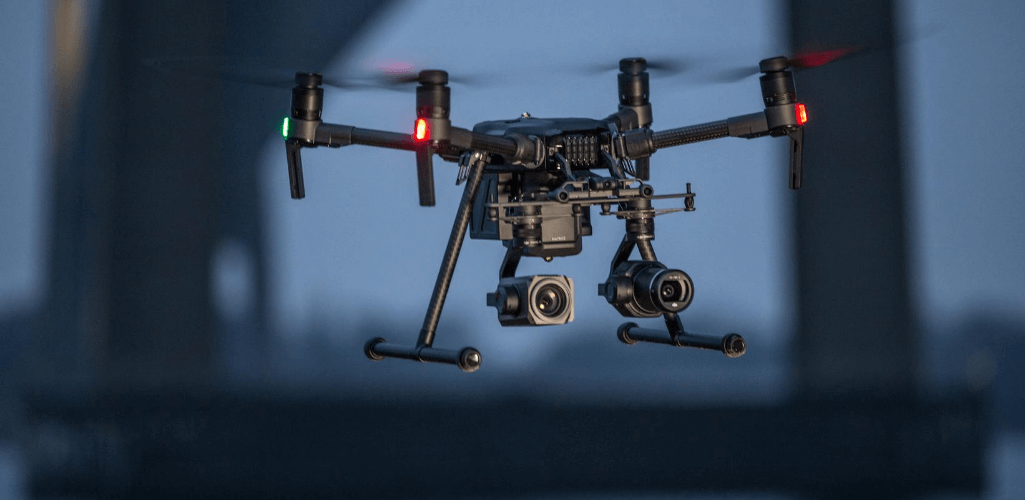
There is much industry discussion around BVLOS and the safety challenges that comes with it.
But the recent FAA BVLOS waiver for first responders is another step towards achieving more frequent BVLOS flights.
Tactical BVLOS Waivers - What To Know
The Tactical BVLOS waivers will expand first responders' drone capabilities, but there are conditions which must be adhered to.
These include:
The First Responder must already be flying under a valid Part 91 Certificate of Authorization.
TBVLOS is only to be used in extreme emergency situations to safeguard human life.
The Pilot in Command (PIC) will return to Visual Line of Sight (VLOS) operations as soon as practical or upon the termination of the extreme emergency situation.
The PIC must not operate any higher than 50 feet above or greater than 400 feet laterally of the nearest obstacle while operating TBVLOS. The 50 feet above an obstacle cannot exceed the 400 feet above ground level (AGL) hard ceiling.
The UAS must remain within 1500 feet of the PIC.
The UAS can operate, during an extreme emergency to safeguard human life, TBVLOS in controlled airspace as long as they don’t exceed the UAS Facility Map altitude values which is a hard ceiling for these operations. This includes operations in controlled airspace where UAS Facility Map altitude values exist, but Low Altitude Authorization Notification Capability (LAANC) authorizations are not available (red grids). LAANC Authorizations are NOT required to conduct TBVLOS Operations.
Operations at night, including operations at night that are in controlled airspace below the UAS Facility Map altitude values, are allowed provided you abide by the standard provision for Night Small UAS Operations in your COA.

Where emergency operations exceed the 400 feet hard ceiling or the UAS Facility Map altitude value, a Special Governmental Interest (SGI) COA/Waiver from the FAA’s Systems Operations Support Center is needed.
How To Apply For The FAA Waiver
Applications for Tactical BVLOS waivers follow a two-step process.
Step One:
Send your initial Requests for the TBVLOS airspace authorization to: 9-UAS-91.113Waivers@faa.gov.
The request should include:
Your concept of operations (including operational area and UAS information) highlighting the required conditions as describe in this resource document.
Your existing Part 91 COA number.
This initial request starts the process. Do not use this process to request time-sensitive First Responder TBVLOS operations. Send time-sensitive requests to the FAA’s Systems Operations Support Center SGI process.
Step Two:
Once your concept of operations is approved, you will be instructed to submit through the COA Application Process system.
It is important that your application notes that you are seeking a TBVLOS 91.113 waiver. Do not submit a request for a TBVLOS 91.113(b) waiver unless directed by the FAA waiver team.
Do not operate TBVLOS until you are issued and receive a signed FAA Form 7711-1 (COA/Waiver form).
All pilots in command should review and abide by the provisions of the issued FAA Form 7711-1 for TBVLOS.
Keep a copy of the FAA Form 7711-1 and CAPS Application for any TBVLOS operation. They must be available for any FAA inspection.
What Drones Are Good For BVLOS?
A range of enterprise drones in the DJI eco-system are laying the foundations for BVLOS and nighttime operations.
The DJI M300 RTK has a 15km maximum transmission range, 55-minutes maximum flight time, six directional sensing and positioning systems, anti-collision beacons, and an AirSense ADS-B receiver.
Equipped with AES-256 encryption, the M300 RTK keeps data transmission and critical information safe.
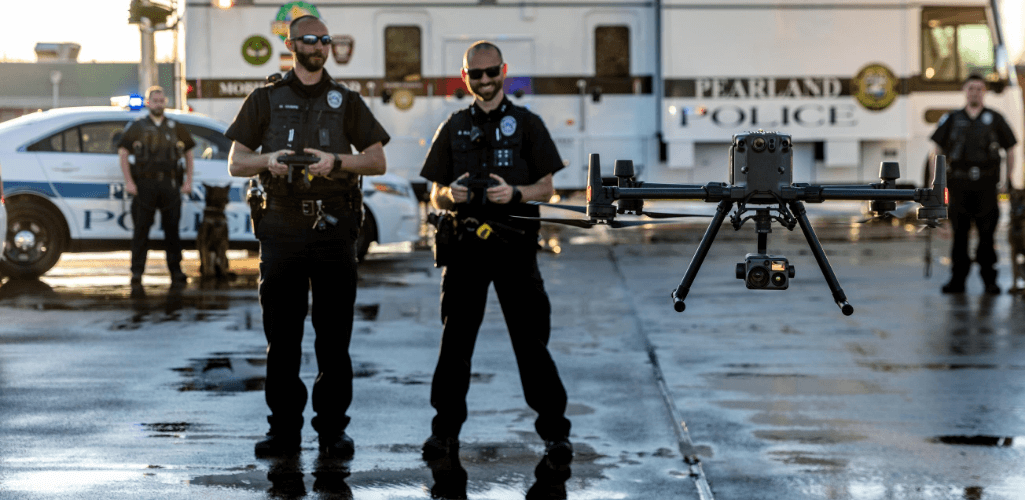
For a more lightweight and portable option, the Mavic 2 Enterprise Series - with a choice between a thermal option or zoom capabilities - feature DJI AirSense, omnidirectional object sensing, and enhanced video transmission up to 8km at 1080p resolution.
These drones also come with modular accessories, including a bright spotlight and a beacon - ideal for low-light missions.
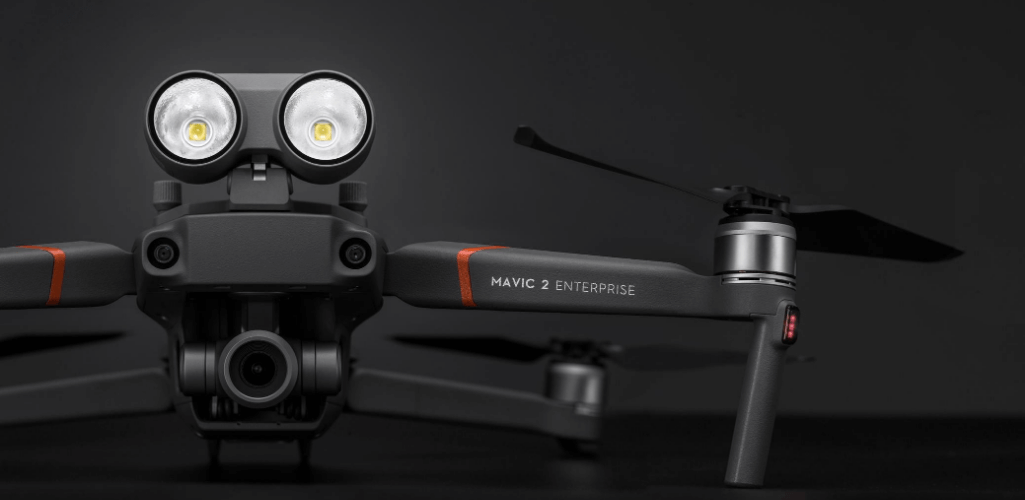
Based in Texas, HELIGUY.com™ is a trusted DJI drone supplier, supporting drone programs in the U.S. and around the world. To find out how we can support you, send us an email or give us a call.
